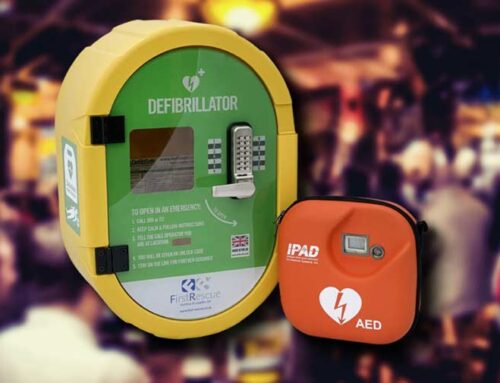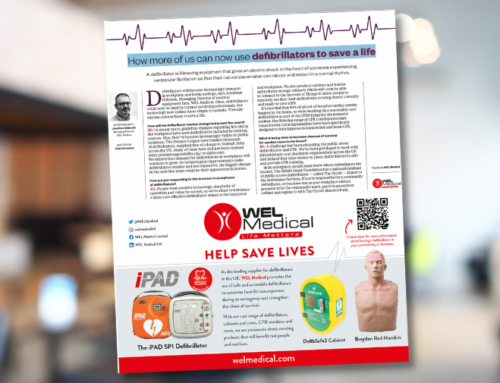Defibrillators are a vital tool in the world of emergency healthcare, often playing a critical role in life-or-death situations. Despite their importance, there is still a lot of confusion and misunderstanding surrounding them. This article aims to demystify defibrillators, answering common questions and busting prevalent myths.
In this article, we will guide you through the basics of defibrillators, address common misconceptions, discuss cost and accessibility, and explain how to use these devices correctly. Our aim is not only to educate but also to demystify some defibrillator myths, ensuring that this potentially life-saving information is accessible to everyone.
What is a Defibrillator, and Why is it Important?
A defibrillator is a life-saving device that delivers an electric shock to the heart, helping it return from potentially fatal abnormal heart rhythms to a normal rhythm. The name ‘defibrillator’ itself suggests its function – it stops fibrillation, a condition where the heart beats erratically, usually during cardiac emergencies. But how does it achieve this?
The defibrillator works by depolarising the entire heart system through a brief electrical current. This depolarisation gives the heart a ‘fresh start’, allowing the cells in the heart to recharge simultaneously, which can help restore a regular heartbeat.
The importance of defibrillators in saving lives during cardiac emergencies cannot be overstated. In situations of cardiac arrest, the high-energy shock delivered by a defibrillator can be the difference between life and death.
In our aim to demystify common defibrillator myths, understanding what a defibrillator is and how it works is the first crucial step.
Common Myths about Defibrillators
There are some common myths about defibrillators that can create unnecessary fear and hesitation. Here, we aim to debunk these misconceptions, providing clear and accurate information to promote understanding and confidence in the use of these life-saving devices.
Myth 1: You need to be medically trained to use a defibrillator
This is another common myth. In reality, defibrillators are designed for use by anyone, regardless of medical training. Clear instructions guide users through the process, ensuring that anyone can step in during an emergency.
Myth 2: Defibrillators can electrocute you
Again, this is false. Safety mechanisms prevent defibrillators from delivering a shock unless it’s necessary, eliminating the risk of accidental electrocution.
Myth 3: Defibrillators are not safe for children
Defibrillators can indeed be safely used on children. While paediatric pads are recommended for children under eight years or weighing less than 25kg, adult pads can also be used if paediatric ones are not available.
By demystifying these defibrillator myths, we hope to encourage more people to learn about and feel comfortable using these crucial devices. Remember, when it comes to cardiac emergencies, every second counts, and having the knowledge and confidence to use a defibrillator could make all the difference.
The Accessibility of Defibrillators
Defibrillators, or Automated External Defibrillators (AEDs), are becoming increasingly common, but many people wonder about the cost. The price of defibrillators in the UK can vary significantly depending on the model and features. Our wide range of defibrillators is suited to different scenarios, so please feel free to reach out to us for more information regarding pricing and accessibility.
Further to this, if you’re looking to fund a community AED, there are often alternative options beyond paying out of your own pocket.
The accessibility of defibrillators is also crucial. Many public spaces such as community centres, sports facilities, and shopping centres now have defibrillators readily available. However, it’s essential that more locations, particularly rural areas, have access to these life-saving devices.
How to Use a Defibrillator Correctly
Using a defibrillator correctly can be the difference between life and death during a cardiac emergency. Here is a simplified step-by-step guide sourced from the British Heart Foundation:
- Step 1: Turn the defibrillator on by pressing the green button and follow its instructions.
- Step 2: Peel off the sticky pads and attach them to the patient’s skin, one on each side of the chest, as shown in the picture on the defibrillator.
- Step 3: Once the pads have been attached, stop CPR and don’t touch the patient. The defibrillator will then check the patient’s heart rhythm.
- Step 4: The defibrillator will decide whether a shock is needed, and if so, it will tell you to press the shock button. An automatic defibrillator will shock the patient without prompt. Don’t touch the patient while they are being shocked.
- Step 5: The defibrillator will tell you when the shock has been delivered and whether you need to continue CPR.
- Step 6: Continue with chest compressions until the patient shows signs of life or the defibrillator tells you to stop so it can analyse the heartbeat again
- Step 7: Immediately after the shock, begin CPR starting with chest compressions.
Remember, every second counts when someone is in cardiac arrest. Demystifying defibrillator myths includes understanding that these devices are designed for ease of use, even for those without medical training.
Source: BHF
Ready to Take the Next Step to Strengthen the Chain of Survival?
That wraps up our mission of Demystifying common defibrillator myths. We hope you now have a better understanding of what a defibrillator is, how it works, and its significance in saving lives during cardiac emergencies.
We encourage you to share this blog post with your friends, family, and social networks. The more people who understand the importance and functionality of defibrillators, the safer our communities can become. If you want more information on accessing or using defibrillators, then be sure to read the articles below. Alternatively, get in touch for more details.








